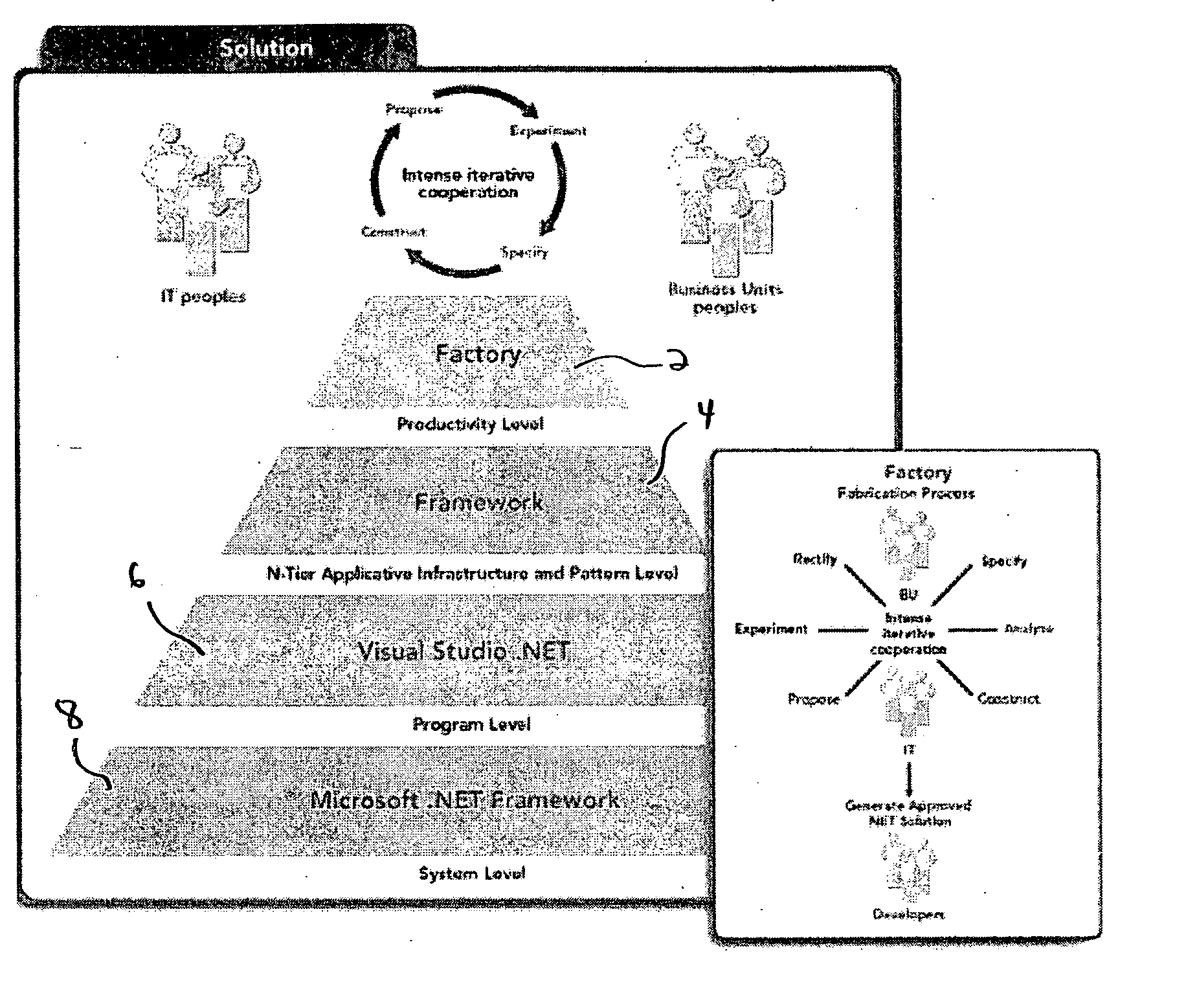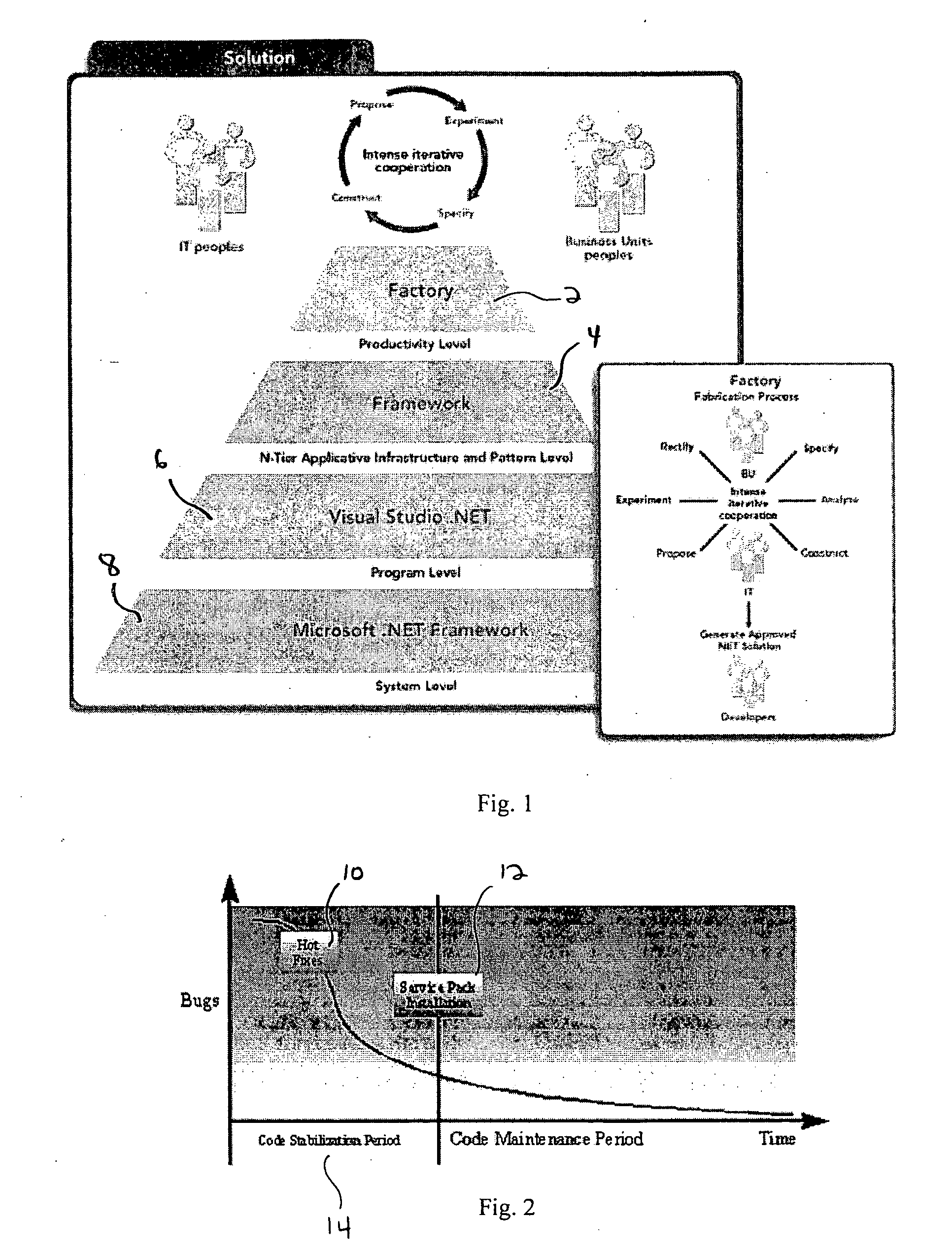In the last 10 years, the evolution of
the Internet has forced software to become increasingly complex to be able to harness the web's untapped potential.
Moreover, business users are not currently involved enough in a standard
Software Development Life Cycle.
Still, it is very difficult and
time consuming to build dynamic e-business applications, consuming web services, with a standard
Software Development Process (SDP).
E-business applications are becoming more and more complex to build now that
the Internet is being transformed towards the XInternet.
Project deadlines are being missed, development budgets are being exceeded, and the costs continue to rise.
Many of the currently available development tools possess a complexity designed for developers, architects, analysts, and a few for managers, but none have been designed specifically for business unit people.
Throughout a software's life cycle, the level of integration for these tools is very low and must be done manually for the most part.
The problem with many of the development products from many IT tool suppliers on the market is that they are difficult to learn and understand, and even more complex to use.
The level of complexity, coupled with the high cost and time required to build dynamic e-application using the standard
Software Development Process, prevents most mid size enterprises from building their own applications successfully.
Moreover, the quality and performance of resulting in-house e-application is unpredictable, lacking the proper N-Tier applicative infrastructure needed to guarantee application
scalability, robustness, and security.
Today's users are all too aware of the limitations that
shackle their desktop applications, keeping them from providing the much-needed solutions to their business needs.
As these applications get older, their speed and power decreases, their
instability increases, and the maintenance costs continue to soar, especially when they apply to multiple users across a rising number of workstations.
Most business users complain that the level of
business integration the applications can provide is not acceptable.
Not only is this approach highly expensive and
time consuming, but it would run the high risk of not being able to
upgrade the application and have it be compatible with the latest set of technologies.
However, the problem with these tools is that they operate at the code level and were not designed to raise these applications to the
web service / N-tier
client-
server model level, which is better suited to support dynamic e-business applications.
However, most companies have found that this method is no longer acceptable because of the obvious security breaches.
Moreover, the application development, debugging, and maintenance problems associated with hundreds of dynamic web pages are beyond the capabilities of medium to complex business applications development.
Although this approach is suitable for low security, general information presentations and small applications, it is not appropriate for modern dynamic e-business applications consuming web services that require high performance and security levels while accessing enterprise databases in real-time.
Some of the limitations of the regular
dynamic web page model are as follows: Low security when not isolated from the
database.
Highly
instability when multifaceted web applications require many pages with complex workflows.
Difficult to code, debug, maintain, and support.
Difficult to reproduce a desktop application's
workflow, its look-and-feel, and its performance.
Another important problem is related to the secluded nature of static web sites.
Currently, most web sites are not interconnected at the business level and while desktop applications can be upgraded through the web, there are still largely isolated.
Although extended networks have increased their speed and capacity, web applications still lack the ability to properly interrelate with each other.
Not all applications need to be converted and some very specific applications that are only used by a few employees are not good candidates.
Another trend comes from the fact that desktop applications have been known to inherently grow and become more complex over time.
Desktop applications that are integrated into a similar
client-
server topology have been plagued with the following limitations: Difficult to deploy on every
workstation and come with very high support and maintenance costs.
Not scalable because the application cannot grow beyond the physical boundaries of a typical two tiers client-server platform.
Not reusable since business rules cannot be encapsulated and centralized onto a single business server.
Poor performance over time because the application grows and becomes more complex, consuming more and more of the limited client
workstation processing power and resources.
With so many elements to
upgrade, it is difficult to start from scratch with such a huge project.
Standard application conversion tools have inherent limits because they start from the code level instead of the model level.
The Internet has several limitations that prohibit it to efficiently achieve Ei and B2Bi.
However, for dynamic desktop application
upgrade to the web, the transition is not as smooth.
This is because desktop applications, accessing corporate databases, are much more complex than regular informational sites.
Up to now, web technologies have not adequately matched the level of desktop application natural complexity.
With hundreds of web pages working in conjunction to replicate the client environment, it simply cannot
handle complex application workflows efficiently.
This approach has proven itself to be highly unstable, and although there are several reductive techniques that can minimize the conflicts, there are still disastrous side effects.
For example, complex workflows are often reduced in complexity by forcing users to follow a simpler but somewhat cumbersome irritating
web navigation path.
As a result, when a condition occurs that the application cannot
handle, the user is forced to restart the web session from the initial
entry point.
The following is a
list of some additional limitations associated to standard web architecture compared to its desktop counterpart: Web client controls are not as rich The application's look-and-feel is distorted and deformed Performance and robustness is noticeably lacking Reliable security is more difficult to achieve
Another important problem is related to the secluded nature of static web sites.
Although extended networks have improved in speed, web applications still lack the ability to properly interrelate with each other.
Before it is possible to upgrade a regular client-server application to the web, there are several important design issues that need to be taken into consideration.
 Login to View More
Login to View More  Login to View More
Login to View More 


